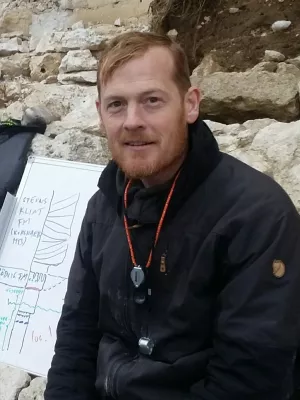
Mikael Calner
Professor

Late Ordovician (Katian) spores in Sweden : oldest land plant remains from Baltica
Author
Summary, in English
A palynologial study of the Ordovician-Silurian boundary (Katian–Rhuddanian) succession in the Röstånga-1 drillcore, southern Sweden, has been performed. The lithology is dominated by mudstone and graptolitic shale, with subordinate limestone, formed in the deeper marine halo of southern Baltica. The palynological assemblages are dominated by marine microfossils, mainly chitinozoans and acritarchs. Sparse but well preserved cryptospores, including Tetrahedraletes medinensis, T. grayii and Pseudodyadospora sp., were encountered in the Lindegård Formation (late Katian–early Hirnantian), with the oldest record just above the first appearance of the graptolite species Dicellograptus complanatus. This represents the earliest record of early land plant spores from Sweden and possibly also from Baltica and implies that land plants had migrated to the palaeocontinent Baltica by at least the Late Ordovician.
Department/s
- Lithosphere and Biosphere Science
Publishing year
2014
Language
English
Pages
16-21
Publication/Series
GFF
Volume
136
Issue
1
Document type
Journal article
Publisher
Taylor & Francis
Topic
- Geology
Keywords
- Stratigraphy
- palynology
- Thermal Alteration Index (TAI)
- Ordovician
- Silurian
- Röstånga-1 drillcore
- Skåne
- Sweden
Status
Published
ISBN/ISSN/Other
- ISSN: 2000-0863

